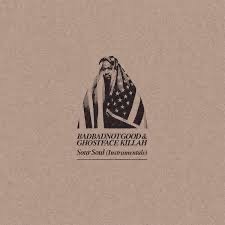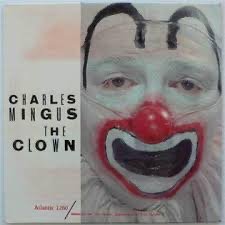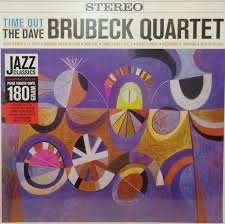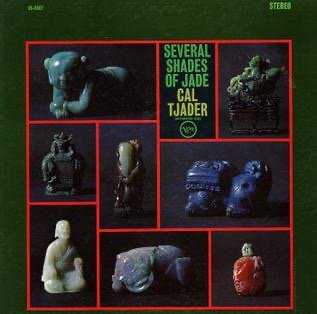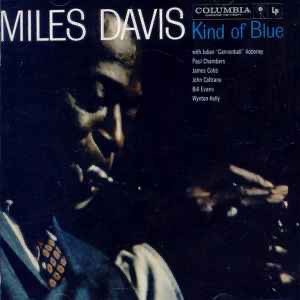Check This Out: 5 Must-Have Jazz Albums for Your Collection
By Jenna Birdwell
BADBADNOTGOOD – Sour Soul (Instrumental)
Before I dive into the instrumental vinyl that I hold so dearly, I want to give credit to the original Sour Soul album, released in February 2015. Without Ghostface Killah of Wu-Tang Clan, the album wouldn’t have the same impact. Killah’s vision was to explore a more sophisticated and elegant style of music, moving beyond traditional hip-hop. The collaboration between the increasingly popular BADBADNOTGOOD (BBNG) and the iconic Ghostface Killah was truly a match made in heaven.
Killah tackled complex and often difficult themes that could only truly be conveyed through poetry and rap, such as on “Tone’s Rap,” where he explores heartache. BBNG elevates the mood with their signature spacey synthesizers, gradually building into a breathtaking melody that evokes hope.
The instrumental version of Sour Soul is on constant repeat for me. Even though I enjoy rap, I find myself listening to the instrumental more often (though I do alternate between the two, as each version complements the other so effortlessly). The instrumental album was one of my most sought-after records when I first heard it, and it’s even the reason I got into jazz music. BBNG may not be traditional jazz, but their albums are heavily inspired by hip-hop with a touch of nu-jazz—this unique blend is what has allowed them to collaborate with a diverse array of artists, including Tyler, the Creator and MF DOOM.
Every person I’ve shared this album with has been hooked, and I believe Sour Soul serves as a gateway to introducing the beauty of jazz to younger generations of modern music lovers. It’s contemporary and inviting, making it accessible to anyone, whether or not they’re already jazz enthusiasts.
Charles Mingus – The Clown
If you’ve ever wanted to feel like a fedora-wearing detective, racing to solve a mystery, then The Clown is the album for you. Released in 1957, this album by Charles Mingus—one of the pioneers of free-form jazz—delivers intense emotion from start to finish.
The opening track, “Haitian Fight Song,” hits you right away with Mingus’s furious bass plucking, creating an almost unsettling and eternal ringing that commands attention.
In the middle of the album, “Reincarnation of a Lovebird” has orchestral tones that remind me of Nikolai Rimsky-Korsakov’s “Flight of the Bumblebee,” but Mingus’s interpretation is much darker, with wailing tones that resonate through each instrument. Though this piece wasn’t originally written to honor his late friend Charlie Parker (aka Bird), Mingus later acknowledged that the song came to symbolize Bird, whose influence on jazz is immeasurable. This connection makes The Clown even more poignant, as Bird was also the namesake for the legendary Birdland jazz club in New York City.
The title track, “The Clown,” features a whimsical, circus-like atmosphere, complete with a narrative that feels like it was taken straight from a children's storybook. The playful melodies contrast with the deeper sadness that lingers throughout the album, painting a portrait of a melancholy clown.
This album is an essential for any collection, offering a blend of unsettling free jazz with the same tension you'd find in classical pieces. If you're looking for something that challenges the norm and evokes raw emotion, The Clown delivers.
The Dave Brubeck Quartet – Time Out
Next, let’s jump to the 1950s with another jazz classic that even reached platinum status and climbed to No. 2 on the Billboard pop charts—Time Out by The Dave Brubeck Quartet. This album is significant not only because of its massive success but also because it introduced jazz fans to unconventional time signatures.
The album features an intriguing blend of Balkan and Turkish folk influences, and these upbeat rhythms can be heard throughout every track. The most well-known song, “Take Five,” written by the quartet’s alto saxophonist Paul Desmond, remains one of the most iconic jazz standards. Brubeck’s piano playing is sensual and groovy, making it nearly impossible to sit still while listening.
What’s especially remarkable about Time Out is its use of exotic time signatures. For example, the album opens with a piece in 9/8 time—a structure rarely used in jazz. This unique approach solidified Time Out as a key example of “West Coast” jazz, known for its more laid-back, relaxed timbre compared to the sharper tones of East Coast jazz.
Cal Tjader – Several Shades of Jade
Now, let’s explore a short but vibrant album that is only 33 minutes long but packs a big punch. Several Shades of Jade (1963) is a jazz album that blends Latin influences with an unexpected Eastern flair.
Cal Tjader, known for his contributions to Latin jazz, pushes the boundaries on this album, incorporating elements from Eastern music, giving the album a unique, exotic vibe. The 23-person ensemble brings the music to life, with conductor Lalo Schifrin adding a sense of grandeur to the rhythms. The result is a collection of songs that are both experimental and dynamic.
If you’re looking for a perfect soundtrack to clean your house or set an upbeat mood, Several Shades of Jade is a great choice. The standout track for me is “Tokyo Blues,” where the bongo rhythms are complemented by Asian tonalities, creating an atmosphere that’s both energetic and contemplative. The vibraphone steals the spotlight throughout the album, taking the lead in a way that’s usually reserved for the saxophone in traditional jazz. With its dreamy, pompous, and exotic sounds, this album is a true gem for anyone looking to explore jazz.
Miles Davis – Kind of Blue
No list of essential jazz albums would be complete without Kind of Blue by Miles Davis. Released in 1959, this album should be at the top of your list if you're only going to take away one recommendation from this entire article.
This album is often hailed as the quintessential example of modal jazz—a style that relies on improvisation over static chord progressions. But beyond its technical brilliance, Kind of Blue is a deeply emotional album. It features legendary musicians like John Coltrane and Cannonball Adderley, and their interplay is mesmerizing.
Although many jazz critics and theorists could dissect the album’s structure, what makes Kind of Blue so powerful is its emotional resonance. Much of the album was improvised, with only a few simple rehearsed progressions. Davis’s intent was to let his band members express themselves freely, capturing the essence of jazz as a raw form of music.
The album’s title hints at the mood of the music, with blues being a strong influence throughout. The track “Freddie Freeloader,” for example, follows the classic 12-bar blues structure. But what truly stands out is the emotional depth conveyed through the trumpet playing of Davis and the soulful piano solo by Wynton Kelly. The way their instruments interact—sometimes in harmony, sometimes in a playful back-and-forth—is the heart of Kind of Blue.

